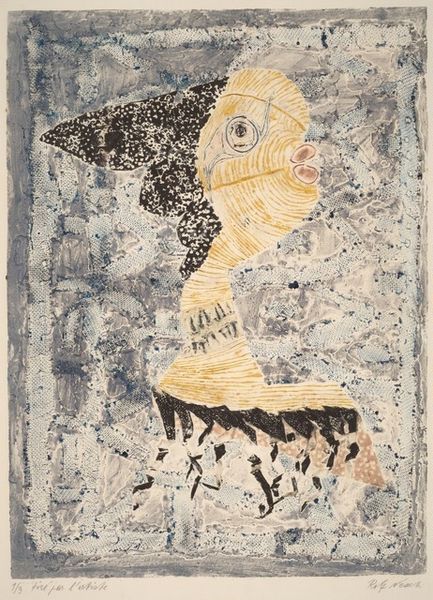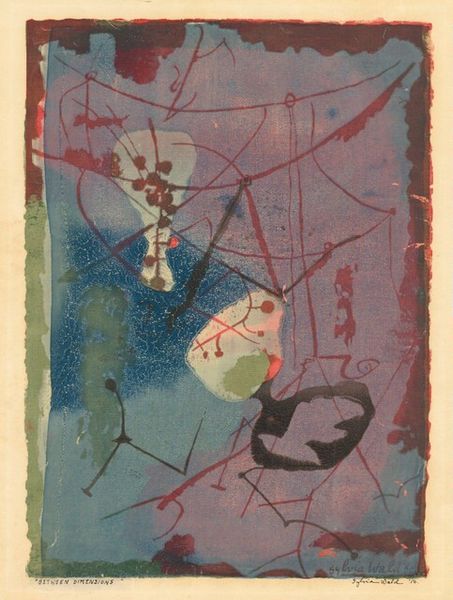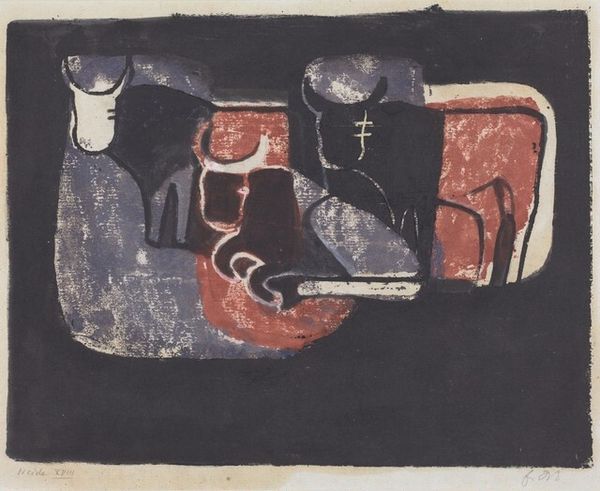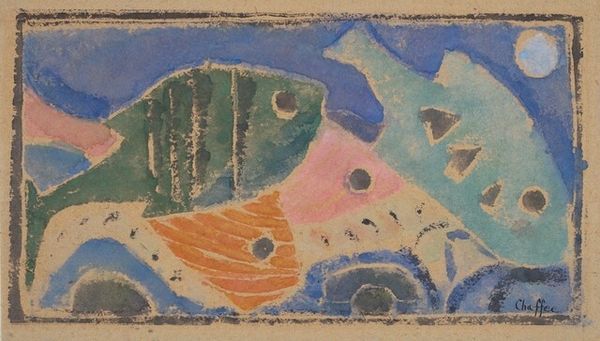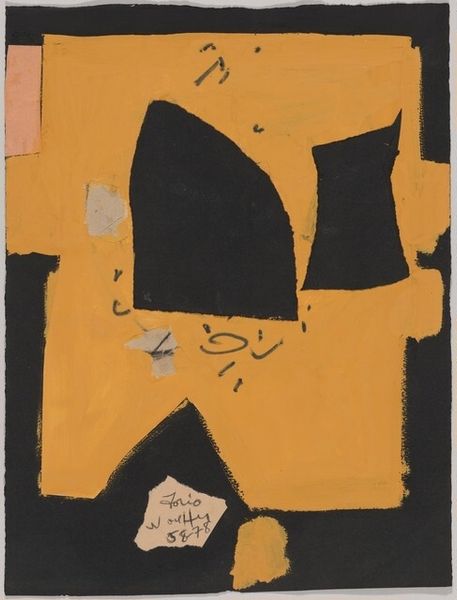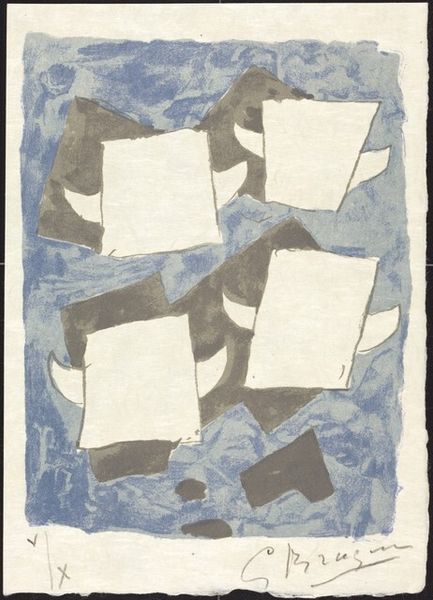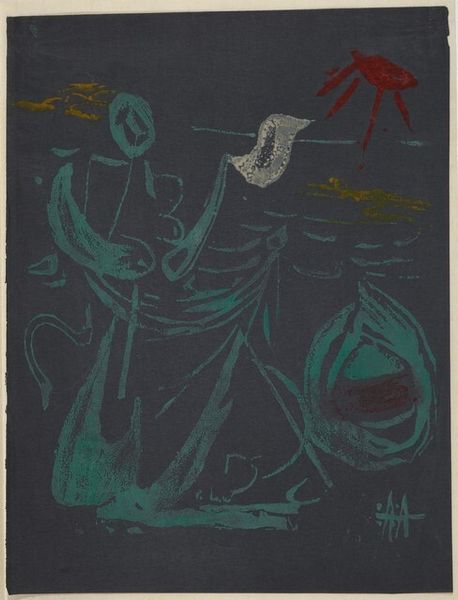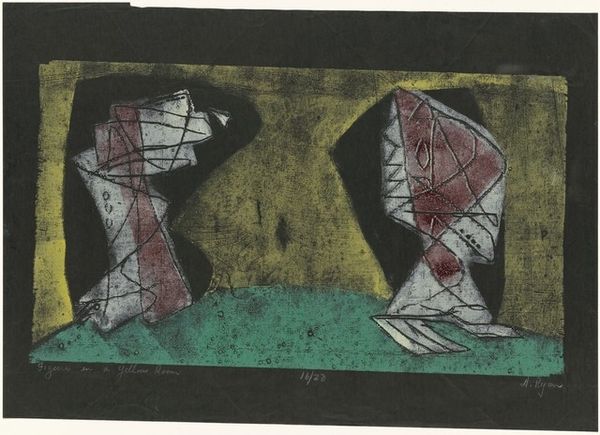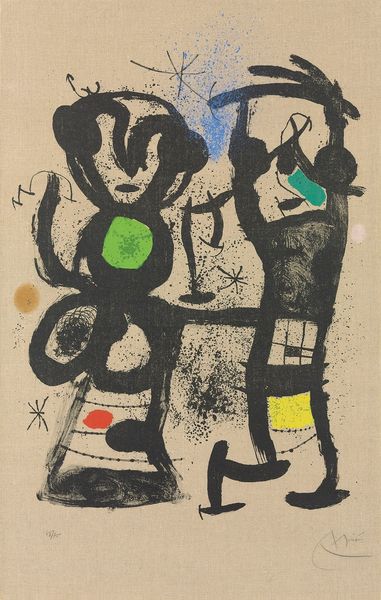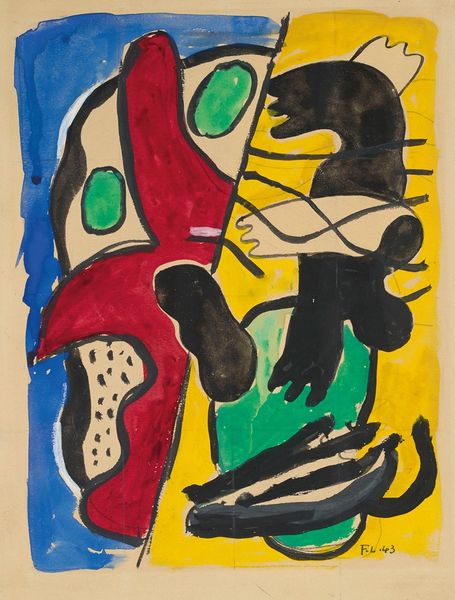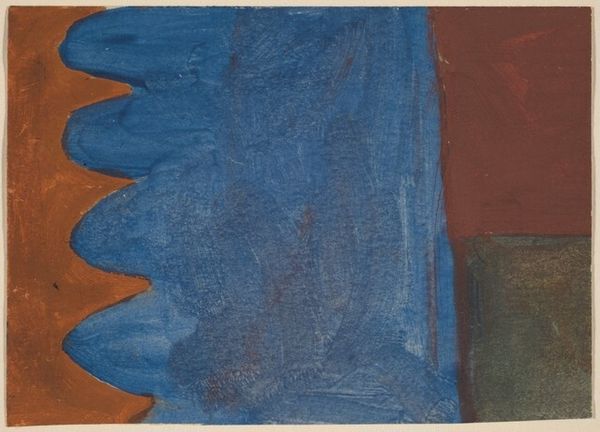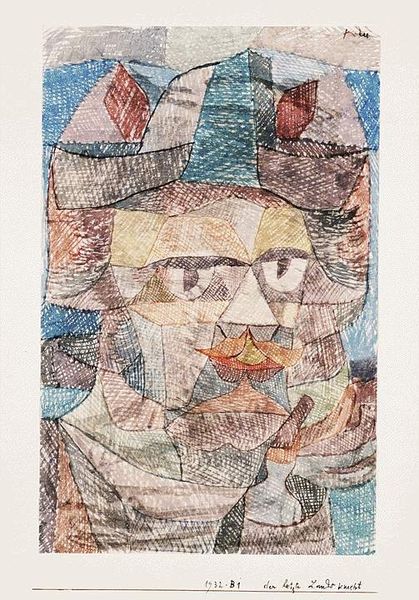
print, watercolor
#
abstract-expressionism
#
water colours
# print
#
watercolor
#
geometric
#
abstraction
#
watercolor
Dimensions: plate: 53.5 x 44.4 cm (21 1/16 x 17 1/2 in.) sheet: 64.6 x 50.5 cm (25 7/16 x 19 7/8 in.)
Copyright: National Gallery of Art: CC0 1.0
Curator: Looking at Michael Ponce de León's "Mountain Games" from 1958, rendered in watercolor print, I'm immediately drawn to its seemingly simple yet captivating arrangement. The blue ground feels surprisingly textured, and the dark shapes hover with a kind of playful defiance. Editor: It's an intriguing piece. To me, the social context is important; Abstract Expressionism was a dominant force at the time. The "games" alluded to in the title likely play with those ideas – exploring form, line, and texture as a means of rejecting the established modes of representation but also reflecting them and playing within the limitations. Curator: Exactly. When you look closely, you can appreciate the labor involved in printmaking, too. Notice the density and build-up of pigments, that tactile surface created through the physical act of layering watercolor in a print process, blurring boundaries between a uniquely "handmade" painting and industrial practices. It really asks, where does labor fit in all of this abstraction? Editor: It seems Ponce de León is examining the art world’s relationship to its audience as much as its own conventions. The playful, almost childlike quality is, in fact, pretty self-aware. This piece perhaps aims to democratize abstract expressionism. Curator: I see what you mean. The muted palette creates an atmosphere of serenity. It's not a forceful statement as one might expect, but rather a contemplative, even poetic interpretation. Editor: And note the socio-political context – America in the late fifties – Cold War tensions, nascent social change. Art becomes a safe space, a space for questioning while remaining visually accessible, not necessarily subversive in a traditional sense but suggestive. The placement of an artwork in gallery and museum spaces shapes its meaning. How do the public encounter abstract work and what meanings are imposed and generated? Curator: The lack of sharp edges and identifiable forms reinforces that quiet tone, a contrast with more strident abstract expressionists. It’s this restraint, this careful crafting that sets "Mountain Games" apart, inviting sustained, thoughtful observation on process and engagement with visual media in general. Editor: I think, in considering this piece, we get to think about the relationship between the artist's individual exploration, the institutional framework where their work gains visibility, and the way broader societal tensions permeate art and cultural creation in indirect ways. Curator: Definitely. It's fascinating how this abstract landscape becomes a lens for seeing both material practice and larger social forces at play. Editor: Indeed, and a useful prompt to reflect on abstraction’s power.
Comments
No comments
Be the first to comment and join the conversation on the ultimate creative platform.
